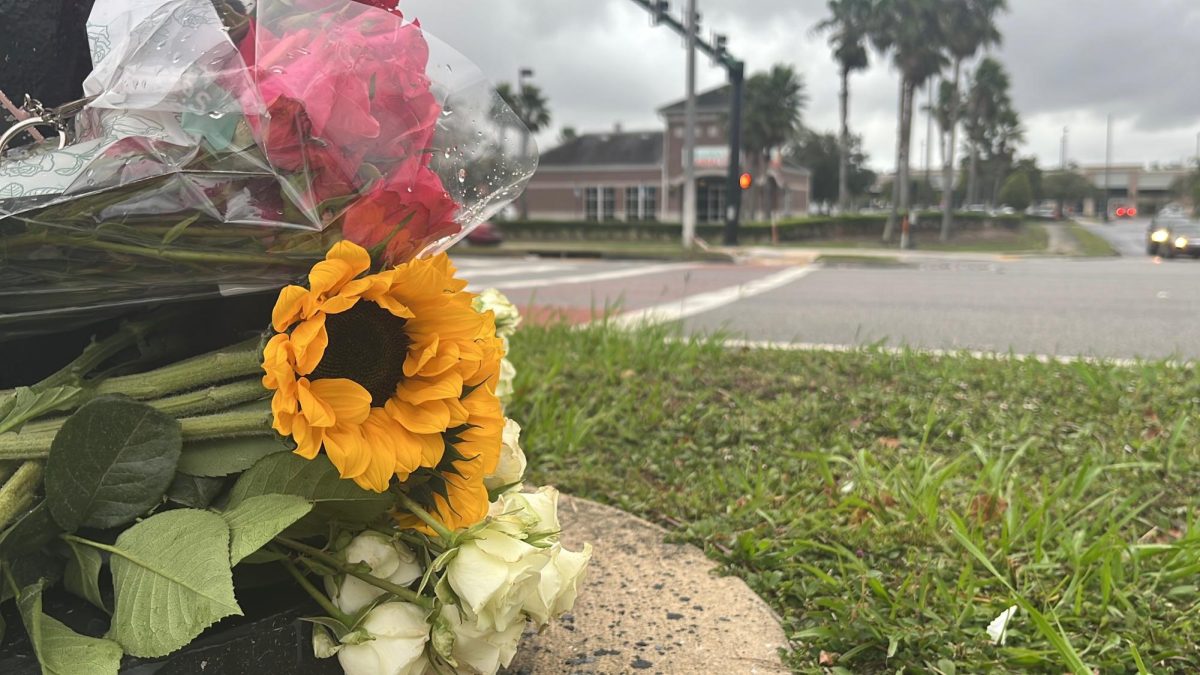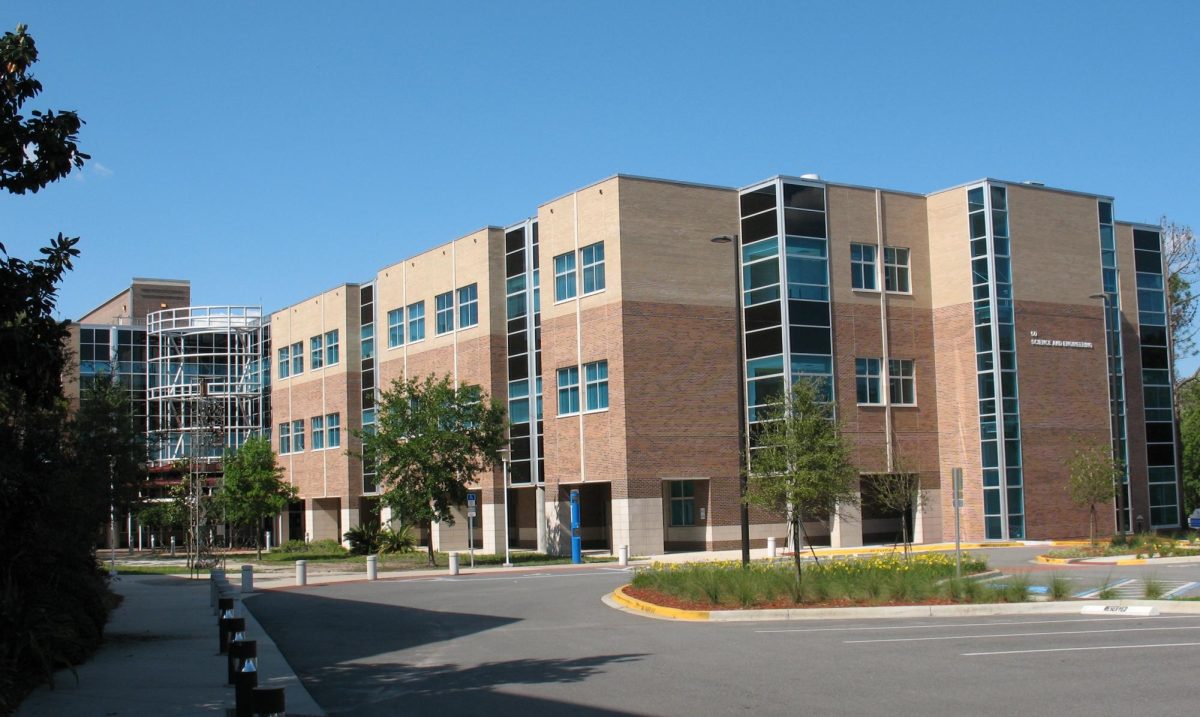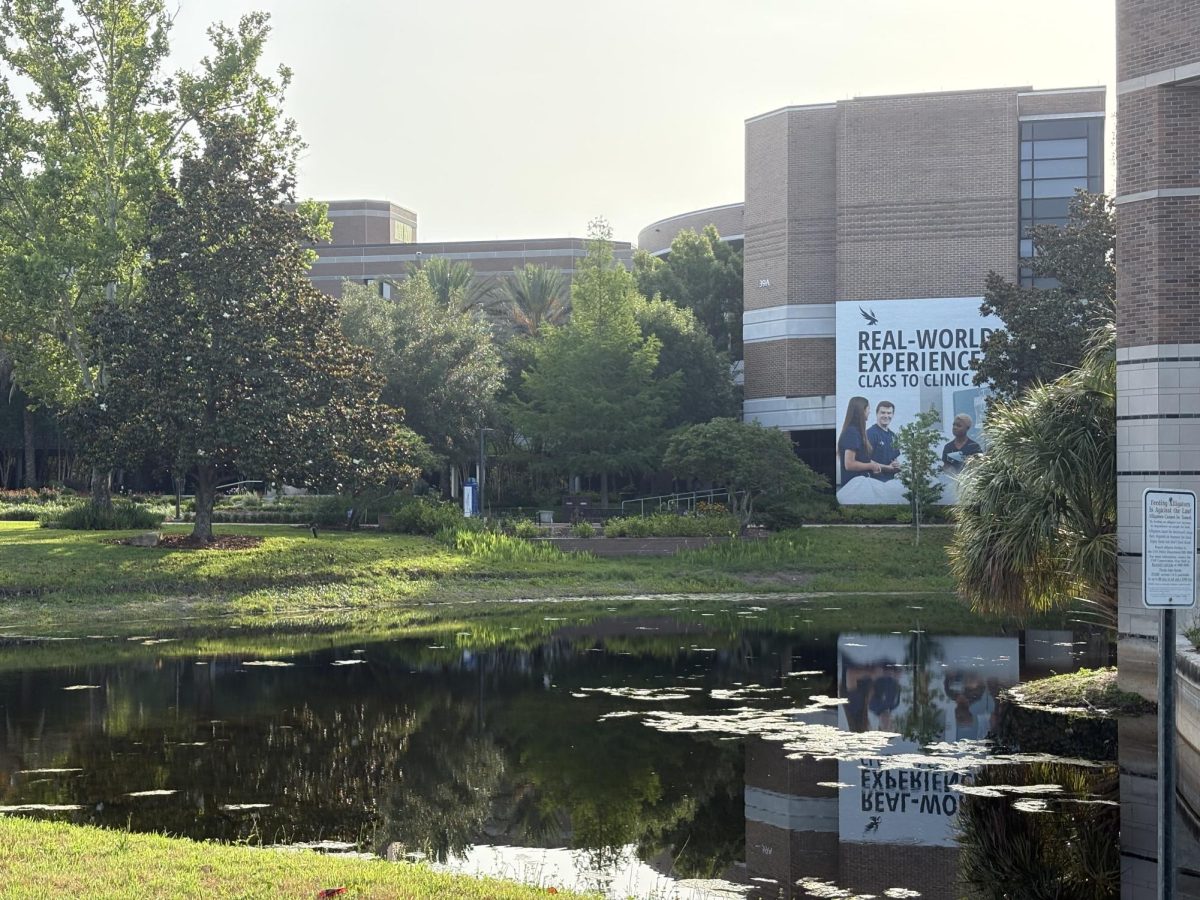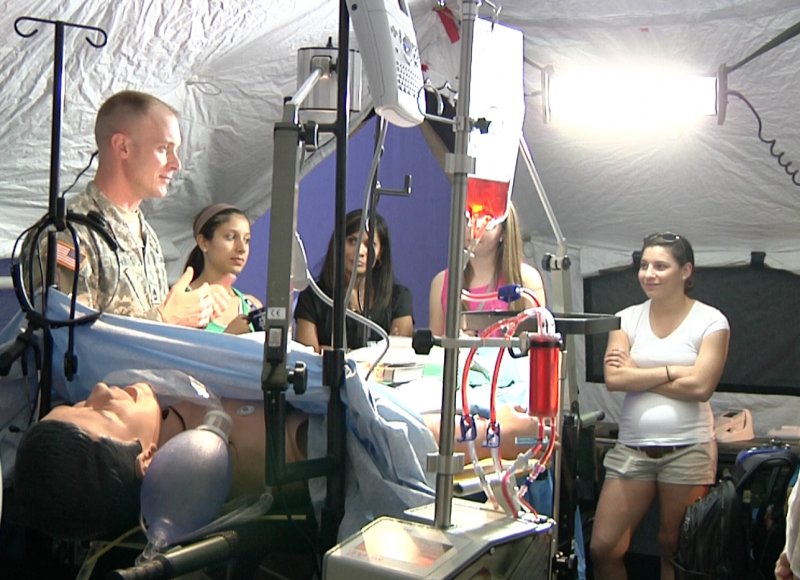
Most people who see the inside of a U.S. Army deployable medical station are either medics or horribly wounded. On April 15, this view was made available to students through the Army’s Forward Surgical Team’s display.
The exhibit, displayed in the Andrew A. Robinson Jr. Theater, served as both a recruitment tool and an informative presentation. It featured a scaled exhibition of a medical unit and a tour of the equipment used to treat the wounded in an unstable war zone.
The main attraction was the DRASH (Deployable Rapid Assembly Shelter), field medical stations that come with a twenty member team of surgeons, nurses, technicians and field medics. These medics will often serve 2,500-3,500 soldiers, as well as civilian casualties of war, in critical condition.
Although the setup is about five times smaller than an actual DRASH unit would be during combat, the point of the presentation was clear – they were well prepared.
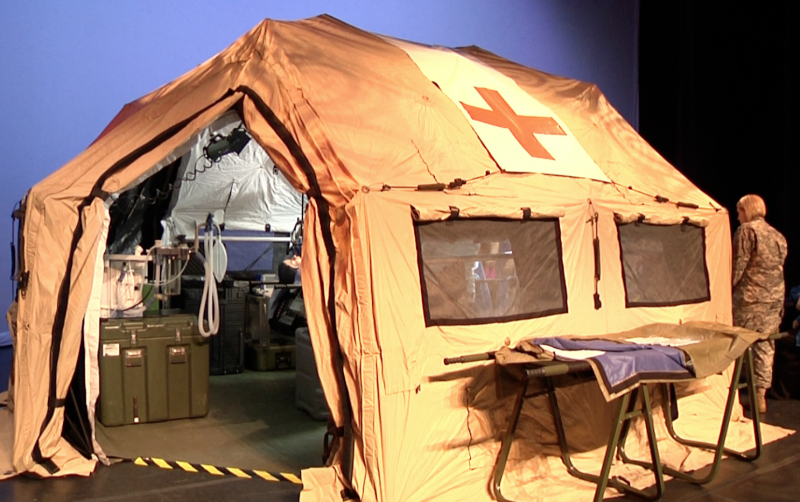
A DRASH takes about thirty minutes to set up, where it is ready to conduct surgery in a zone about three to five miles away from the frontlines or for humanitarian efforts. In about ninety minutes, it is connected to several other units that can house U.S. soldiers, enemy combatants, and civilians.
Sgt. 1st Class Baer, a member of the Mission Support Battalion, who has seen the inside of a deployable surgical unit through both combat and medical experience, was on the scene to give students a clear understanding of the DRASH.
The Sergeant said those who are operated on in a DRASH are in such a critical condition that they would not survive the trip to a hospital. He said most would assume that this consists primarily of soldiers, but civilians and children actually make up a large portion of those seen in these emergency units.
Baer said, “[the demonstration] gives the student population, as well as the American public, a hands on exhibit to see what Army medicine is all about.”
Several of the students who went to see the exhibit were already planning on joining the military.
Sarah Rawlins, a nursing major who is attracted to the military for its discipline, said she believes that anyone interested in the armed forces or the medical field would be intrigued by the realism that is found in the display.
The Army’s Forward medical Unit has already toured about twenty to thirty universities this year and is planning on returning to UNF sometime during the next fall semester.
Email Carter Roush at reporter9@unfspinnaker.com




